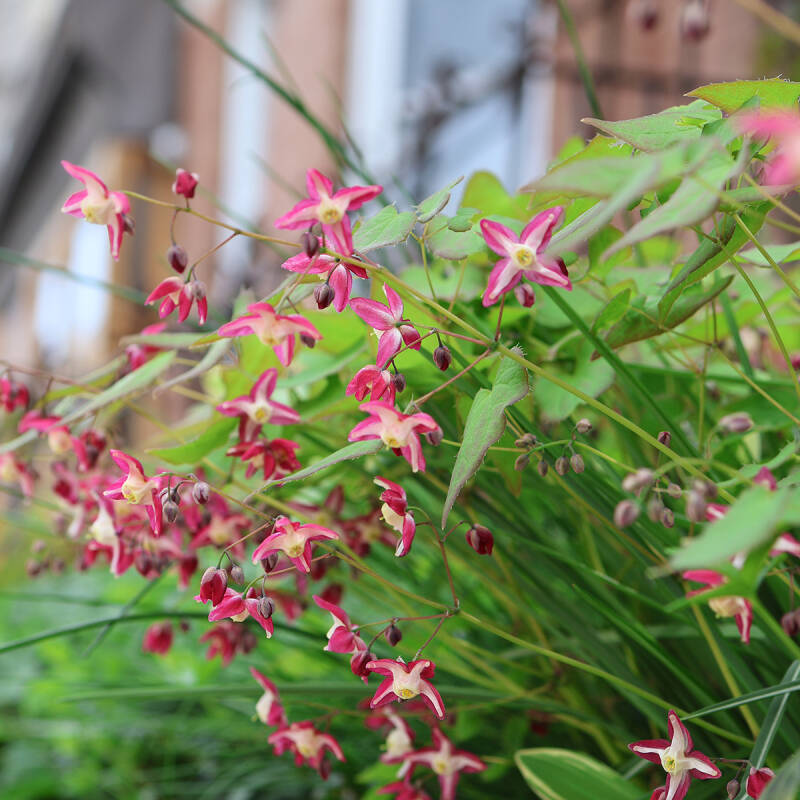While spring may seem like a long way away—summer doesn’t even technically end until September 22—there are things you can do over the next month or so to prepare your garden for a successful spring.
1. Amend your soil.

Fall is a great time to amend the soil and put down compost (better, some argue, than spring). This is particularly helpful if your soil is heavy and compacted. Work it into the soil with a garden or broad fork, gently. This is best done while plants are still standing and you can identify where they are to avoid damaging them. For more on soil amendments in autumn, see Fall Fertilizing: How to Prepare Your Lawn, Shrubs, Trees, and Perennials for a Restorative Winter Sleep.
2. Plant, plant, plant.
Now’s the time to revamp your garden or just fill in the holes. The cooler temperatures mean less evaporation. Transplant shock happens when the fine, hair-like feeder roots are damaged during the transplant process. Less transpiration means less need for water from the roots and less stress for the plants. You will still need to water your new plants, just less than if you planted them in the heat of summer. Additionally, the cooler air temperatures and warmer soil support new root growth. See Fall Gardening 101: Autumn Can Be an Ideal Time to Plant for more on this topic.
3. Divide and spread.

Did your black-eyed Susans over-perform this season? Are your hostas starting to take over? Now’s the time to divide them and get free new plants! See Time to Thin Out the Garden? How to Divide (and Multiply) Popular Perennials for how to do it right.
4. Bury the bulbs.
Address next spring’s FOMO by planning now and planting the bulbs you want blooming in your spring garden. Order and plant bulbs a few weeks before the first average frost date for your growing zone. Most bulbs will ship at the right time to be planted. Easy and smart choices for bulbs are daffodils, hyacinths, and crocus.(See Your First Garden: What You Need to Know Before You Plant Bulbs and The Garden Decoder: What Does It Mean to ‘Naturalize’ Bulbs? for tips.
5. Save the seeds.

Seed saving is all about prepping your garden for spring. By saving seeds you are helping your garden grow for next year. Literally. While seed saving can be specific to the plant, in general you should wait until the seed heads and pods are completely dry. Some will rattle like baptisia, others will fly away on the slightest of breezes, like milkweed. Some seeds—many native plants—may need cold stratification and stored in the refrigerator for a period of time. Do your research and store your seed properly. Mark your calendar now for when to sow in the spring.
6. Plan for support.
Everyone knows that a peony will flop over with its massive blooms unless you surround the plant with a peony ring before it gets too big. But they are not the only ones in need of support. Joe pye weed, Sedum ‘Autumn Joy’, any number of taller perennials that bloom profusely, need support. Find those splayed perennials now and make a list with locations for next year so you’ll be ready to prop them up before they get too large.
7. Clean up. But not too clean.

Take away and trash any diseased plant material. Do not compost them because home compost piles may not reach the proper temperature to kill pathogens. Leave the leaves, though. They provide food for your plants, keep moisture in the soil, and provide shelter for pollinators and insects that help with pest control. And resist the urge to “tidy” up perennials and grasses by cutting them back. Leave at least some of them intact (including the seed heads) for overwintering creatures in need of food and shelter. For more on this topic, see 6 Nature-Based Garden Tasks for Fall.
See also:
- Gardening 101: How to Propagate Your Annuals this Fall for Next Summer
- Gardening 101: How to Use Fallen Leaves
- Fall Gardening: Can You Stop Watering Now? (And 5 Other Burning Questions)












Have a Question or Comment About This Post?
Join the conversation (0)